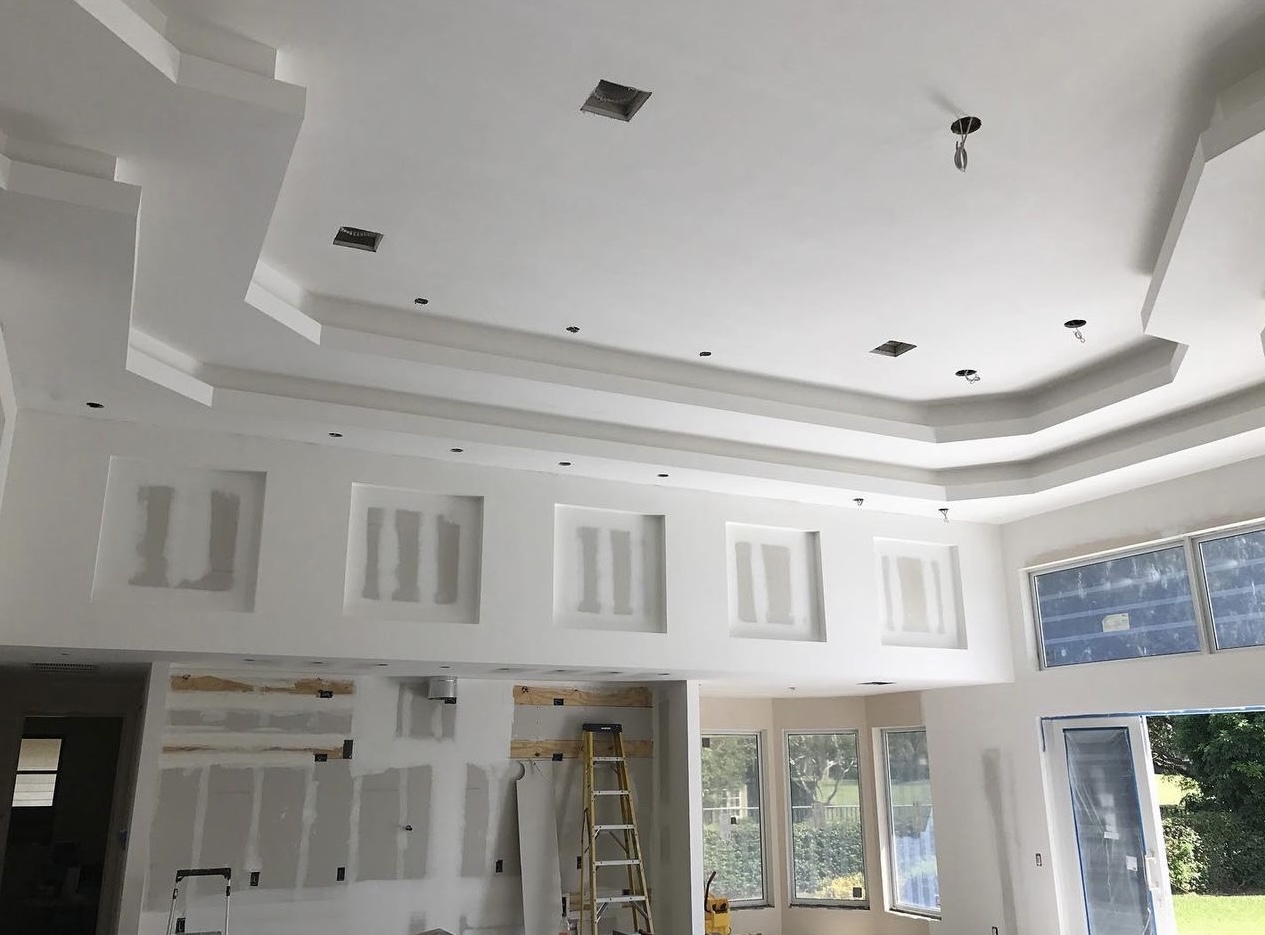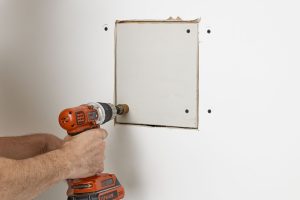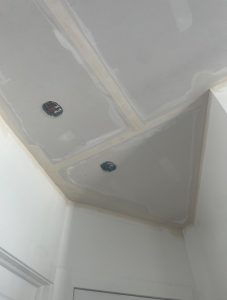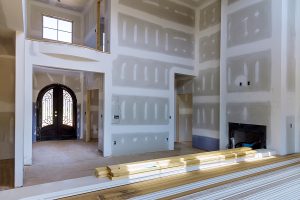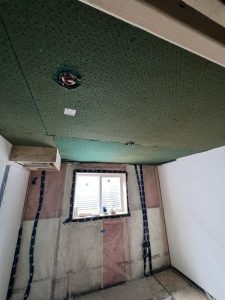In the ever-evolving construction industry, drywall remains a staple material due to its versatility, cost-effectiveness, and ease of installation. However, staying updated with the latest trends in drywall installation is crucial for professionals aiming to maintain a competitive edge. This post explores key trends shaping the modern drywall installation landscape, including sustainable materials, technological advancements, prefabrication, acoustical solutions, fire resistance, lightweight options, and aesthetic innovations.
1. Sustainable and Eco-Friendly Drywall Materials
The push towards sustainability is transforming the construction industry, and drywall is no exception. Eco-friendly drywall options are increasingly popular as builders and homeowners seek to minimize environmental impact and improve indoor air quality.
Eco-Friendly Drywall Options:
- Recycled Drywall Boards: These are made from post-consumer and post-industrial waste materials, reducing landfill contributions.
- Low-VOC and No-VOC Drywall: Traditional drywall can emit volatile organic compounds (VOCs) that harm indoor air quality. Low-VOC and no-VOC drywall options are available, promoting healthier indoor environments.
Benefits:
- Environmental Impact: Using recycled materials reduces the carbon footprint of construction projects.
- Indoor Air Quality: Low-VOC and no-VOC products contribute to healthier living and working spaces by reducing harmful emissions.
Case Studies:
- Eco-Friendly Projects: Highlight projects that successfully incorporated sustainable drywall, such as LEED-certified buildings or eco-friendly residential developments.
By choosing sustainable drywall materials, construction professionals can meet growing consumer demand for green building practices while contributing to environmental conservation.
2. Technological Advancements in Drywall Installation
Advancements in technology are revolutionizing drywall installation, making the process more efficient, precise, and cost-effective.
Tools and Equipment:
- Laser Levels and Digital Measuring Tools: These tools enhance accuracy in measuring and aligning drywall, reducing errors and waste.
- Automatic Taping and Mudding Tools: These tools streamline the taping and mudding process, speeding up installation and ensuring consistent results.
Software and Apps:
- Project Management Apps: Apps like PlanGrid and Procore help manage drywall installation projects, track progress, and facilitate communication among team members.
- 3D Modeling and Simulation Software: Tools like SketchUp and Revit allow for detailed planning and visualization of drywall installation, helping to identify potential issues before they arise.
Impact:
- Increased Precision and Efficiency: Advanced tools and software reduce manual labor and errors, leading to faster and more accurate installations.
- Reduced Labor Costs and Time: Automation and precision tools help complete projects more quickly, reducing overall labor costs and project timelines.
3. Prefabrication and Modular Construction
Prefabrication and modular construction methods are gaining traction, offering significant benefits for drywall installation.
Prefabricated Drywall Panels:
- Description and Benefits: Prefabricated panels are manufactured off-site and delivered ready to install, reducing on-site labor and waste.
- Integration with Modular Construction: Prefabrication complements modular construction, where entire building sections are constructed off-site and assembled on-site.
Trends in Modular Construction:
- Growing Popularity: Modular construction is becoming more common in both residential and commercial projects due to its efficiency and cost savings.
- Speed and Efficiency: Prefabricated panels and modular construction methods reduce construction time, allowing for faster project completion.
Examples:
- High-Profile Projects: Highlight notable projects using prefabricated drywall, such as large-scale commercial buildings or innovative residential developments.
By adopting prefabrication and modular construction techniques, professionals can enhance efficiency, reduce waste, and meet tight project deadlines.
4. Acoustical Drywall Solutions
As the demand for better sound control in buildings grows, acoustical drywall solutions are becoming increasingly important.
Importance of Sound Control:
- Rising Demand: Soundproofing is critical in various settings, including residential buildings, offices, and entertainment venues, to enhance comfort and productivity.
Innovative Products:
- Sound-Dampening Drywall Options: Products like QuietRock and other sound-dampening drywall panels significantly reduce noise transmission between rooms.
- Multi-Layered Drywall Systems: These systems combine multiple layers of drywall with specialized materials to enhance sound insulation.
Applications:
- Office Spaces: Improved acoustics contribute to a more productive work environment.
- Multi-Family Residences: Enhanced sound control increases tenant satisfaction in apartments and condos.
- Entertainment Venues: Superior acoustics are essential in theaters, concert halls, and recording studios.
Acoustical drywall solutions help create quieter, more comfortable environments, meeting the growing demand for effective sound control in various building types.
5. Fire-Resistant Drywall Innovations
Fire safety is a paramount concern in construction, leading to innovations in fire-resistant drywall materials and technologies.
New Materials and Technologies:
- Enhanced Fire-Resistant Drywall Options: Products like Type X and Type C drywall offer increased fire resistance, providing crucial time for evacuation in case of a fire.
- Integration with Building Safety Systems: Advanced fire-resistant drywall can be integrated with sprinkler systems and fireproofing materials for comprehensive fire protection.
Regulatory Changes:
- Building Codes: Updates in building codes and regulations often require higher fire resistance standards, driving the adoption of new drywall products.
- Compliance: Staying informed about regulatory changes ensures compliance and enhances safety in construction projects.
Project Examples:
- High-Risk Areas: Fire-resistant drywall is especially important in schools, hospitals, and other high-occupancy buildings where safety is a top priority.
By incorporating fire-resistant drywall, professionals can enhance building safety and meet stringent regulatory requirements.
6. Lightweight Drywall
Lightweight drywall products are transforming the installation process by reducing labor intensity and improving handling.
Benefits of Lightweight Options:
- Easier Handling and Installation: Lightweight drywall panels are easier to transport, handle, and install, reducing physical strain on workers.
- Reduced Transportation Costs: Lower weight means less fuel consumption during transportation, resulting in cost savings.
Popular Products:
- Overview: Products like USG’s UltraLight Panels offer the same strength and durability as traditional drywall but with significantly reduced weight.
- Innovations: Ongoing research and development continue to produce even lighter and stronger drywall options.
Impact on Construction:
- Improved Efficiency: Lightweight drywall speeds up the installation process, enabling faster project completion.
- Reduced Labor Fatigue: Easier handling reduces worker fatigue and the risk of injury, contributing to a safer work environment.
7. Design and Aesthetic Trends
Drywall is no longer just a functional material; it also plays a crucial role in the aesthetic appeal of modern interiors.
Textured Drywall Finishes:
- Popular Textures: Techniques such as knockdown, orange peel, and Venetian plaster are trending, adding visual interest to walls and ceilings.
- Current Design Trends: Modern interior design often incorporates textured finishes to create unique, stylish spaces.
Customizable Drywall Solutions:
- Versatility: Drywall can be painted or finished to mimic other materials like wood, brick, or stone, offering endless design possibilities.
- Creative Applications: Drywall is being used in innovative ways, such as creating curved walls, intricate ceiling designs, and custom-built features.
By staying attuned to design trends and leveraging the versatility of drywall, professionals can create visually stunning interiors that meet the demands of modern aesthetics.
Conclusion
The drywall industry is experiencing significant advancements, driven by sustainability, technology, prefabrication, acoustical needs, fire safety, lightweight materials, and design innovation. Staying informed about these trends is crucial for professionals seeking to deliver high-quality, efficient, and aesthetically pleasing projects. By embracing these trends, drywall installers can enhance their skills, meet client expectations, and remain competitive in the ever-evolving construction landscape.
Call to Action
We hope you found this exploration of drywall installation trends insightful. Share your experiences and insights in the comments below, and don’t forget to subscribe to our blog for more industry updates and expert tips. Stay ahead of the curve and ensure your projects reflect the latest advancements in drywall technology and design.

